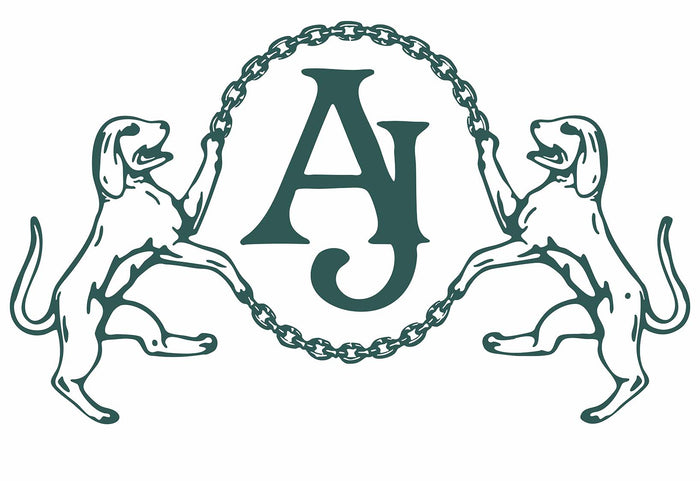The Scottish connection in Victorian royal wedding jewellery proved particularly rich in commemorative pieces, transforming Highland materials and traditions into sophisticated jewellery that captured the Victorian imagination. Queen Victoria's declaration that Balmoral was "this dear Paradise" elevated Scottish materials to almost sacred status, whilst Prince Albert's Germanic sensibilities merged with Celtic traditions to create a distinctive Anglo-Scottish-German hybrid style that defined royal jewellery from the 1840s onwards.
The Royal Love Affair with Scotland
Victoria and Albert's first visit to Scotland in 1842 initiated a romance with the Highlands that profoundly influenced British culture and jewellery fashion. The acquisition of Balmoral Castle in 1848 provided a private retreat where the royal family could embrace Scottish life, and more importantly for jewellery history, access to Scottish materials that would become central to Victorian sentimental jewellery.
Balmoral as Inspiration
The estate provided both materials and motifs for jewellery design. The most ordinary pebbles found on the grounds, when mounted as jewellery by royal jewellers, acquired almost mystical significance as tokens of royal favour. The landscape itself – mountains, rivers, flora, and fauna – inspired design motifs that appeared in everything from modest brooches to elaborate parures.
Victoria's journal entries reveal the emotional significance of Scottish materials. She described sending "a little pin made out of a piece of granite I picked up on the path to the Glassalt Shiel on 26th October" as a gift, adding personal notes about the exact location and circumstances of finding each stone. This specificity transformed geological specimens into biographical artefacts.
The Cairngorm Revolution
The cairngorm, a smoky quartz found in the Cairngorm mountains, became the quintessential Scottish gemstone of the Victorian era. Its rich brown hues, ranging from pale honey to deep chocolate, perfectly suited Victorian aesthetic preferences whilst its availability made it accessible to various social classes.
Royal Cairngorm Pieces
The September 1848 cairngorm picked up by Prince Albert at Lochnagar and subsequently set with enamelled gold, seed pearls, and rubies represents the pinnacle of Scottish royal jewellery. This piece, measuring 5.7 x 2.4cm, demonstrated how humble Scottish materials could be elevated through exceptional craftsmanship and royal association.
The technical challenges of working with cairngorm required specialised knowledge. Unlike diamonds or rubies, cairngorms could fracture along hidden flaws during cutting or setting. Scottish lapidaries developed techniques for identifying stable stones and cutting them to maximise their distinctive smoky colour whilst avoiding inclusions. These skills, traditionally confined to Scotland, spread throughout Britain as demand for Scottish jewellery increased.
Scottish Pebble Jewellery: From Shore to Court
The Victorian mania for pebbles set in jewellery began before the acquisition of Balmoral but exploded after 1848. These pieces, dating from 1841 and 1842, established a tradition that would dominate Scottish jewellery production for decades.
The Bagshot Pebbles
The brooch engraved "Rapley" and dated 1853, composed of three pieces of pebble picked up at Bagshot, the residence of Princess Mary, Duchess of Gloucester, exemplifies the geographic expansion of the Scottish pebble tradition. A beetle brooch made from the same pebble and a brooch with the initials "PA" from another Bagshot pebble demonstrate how specific locations became commemorated through jewellery.
Osborne Pebbles and Maritime Connections
The Scottish tradition influenced jewellery production at other royal residences. A bracelet of many-coloured Osborne pebbles, identifiable with a March 1848 gift described as "A jointed bracelet composed of 10 pebbles picked up at Osborne & set in gold" to celebrate Princess Louise's birth, shows how Scottish precedents shaped commemorative practices across Britain.
Osborne brought out a maritime theme, with yachting jewels and sailor suits complementing the Scottish Highland aesthetic. This combination of Highland and maritime motifs created a distinctively British royal style that influenced fashion throughout the Empire.
Highland Flora and Fauna in Jewellery
Scottish wildlife and plants provided rich inspiration for Victorian jewellers, with designs ranging from naturalistic representations to stylised Celtic interpretations.
Deer Teeth and Sporting Jewellery
Masses of deer's teeth were mounted as studs, brooches, earrings, and necklaces, reflecting the importance of deer stalking in Highland culture. Setting stag's teeth in precious ornaments was common in Germany at this date, suggesting that both the stag's-teeth items and pieces set with infant teeth represent Prince Albert introducing German commemorative traditions to British jewellery.
The holly brooch set with two stag's teeth and tied with a Royal Stuart tartan ribbon, a souvenir of Balmoral mentioned in Albert's gift lists, combined multiple Scottish elements: Highland fauna, native flora, and clan symbolism. Such pieces required jewellers to develop new techniques for working with organic materials whilst maintaining the refined aesthetic expected of royal jewellery.
Thistle Motifs

The thistle, Scotland's national emblem, appeared throughout Victorian Scottish jewellery. The enamelled gold thistle brooch incorporating Princess Victoria's first tooth, shed in Scotland in 1847, merged Scottish symbolism with Germanic commemorative traditions. The thistle's prickly leaves and purple flower provided opportunities for varied enamel work and textural contrasts that appealed to Victorian sensibilities.
Celtic Revival and Ancient Traditions
The Victorian fascination with Scotland extended beyond contemporary Highland culture to ancient Celtic traditions, spurring archaeological interest and revivalist jewellery design.
Ring-Brooches and Celtic Forms
Edmund Johnson's 1849 ring-brooches for West & Sons, Dublin, created in silver and silver with garnets, represent the Celtic Revival's influence on royal jewellery. These pieces, based on ancient penannular brooches, modernised traditional forms whilst maintaining their symbolic significance. The use of garnets, traditionally associated with Highland jewellery, added colour that complemented the silver's cool tones.
Interlace Patterns and Symbolic Designs
Celtic interlace patterns, revived through Victorian archaeological studies, appeared in wedding jewellery as symbols of eternal bonds. The endless knots and spirals, having no beginning or end, perfectly expressed Victorian ideals of eternal love and fidelity. Scottish jewellers, particularly in Edinburgh and Glasgow, developed sophisticated techniques for creating intricate interlace patterns in gold and silver.
Technical Innovations in Scottish Jewellery
Working with Scottish materials required developing new techniques that influenced broader jewellery manufacture.
Granite Working Techniques
In 1858, Garrard's workshop records note "cutting heart-shaped earrings from granite and mounting ditto in silver," charged to Prince Albert. This seemingly simple task required revolutionary techniques. Scottish granite, among the hardest stones used in jewellery, demanded specialised cutting equipment and exceptional skill to achieve smooth, wearable surfaces.
The development of these techniques had broader implications. Tools and methods developed for Scottish granite proved useful for other hard stones, expanding the range of materials available to Victorian jewellers. The ability to work with extremely hard materials also enabled more durable jewellery suitable for active Victorian lifestyles.
Mixed Material Settings
Scottish jewellery pioneered combinations of materials previously considered incompatible. Soft organic materials like teeth and horn appeared alongside hard stones and precious metals. Achieving secure settings that accommodated different rates of thermal expansion and varying degrees of brittleness required innovative approaches to traditional goldsmithing techniques.
The Commercialisation of Scottish Style
Royal patronage transformed Scottish jewellery from regional craft to international fashion. The industry's growth provides a case study in how royal influence shaped Victorian commerce.
Edinburgh and Glasgow Workshops
Scottish jewellery production centred on Edinburgh and Glasgow, with smaller workshops in Aberdeen and Inverness serving local markets. These workshops developed distinctive regional styles: Edinburgh favouring archaeological revival pieces, Glasgow embracing industrial techniques for mass production, Aberdeen specialising in local granite, and Inverness maintaining traditional Highland designs.
Export and Empire
Scottish jewellery became a significant export, with pieces shipped throughout the British Empire. Colonial administrators and military officers purchased Scottish jewellery as mementos of home, spreading Highland fashion to India, Australia, Canada, and beyond. This global distribution established Scottish motifs as symbols of British identity, regardless of the wearer's actual Scottish connections.
German-Scottish Synthesis

Prince Albert's Germanic heritage merged with Scottish traditions to create unique hybrid forms that became distinctively Victorian.
Commemorative Traditions
The German custom of incorporating organic materials – hair, teeth, pressed flowers – into jewellery found perfect expression in Scottish pieces using Highland materials. The combination of German sentiment and Scottish substance created jewellery that was both deeply personal and culturally significant.
In Germany, sophisticated production of polished and colour-enhanced hard stone ornaments had existed since the eighteenth century. This expertise, combined with Scottish materials and British craftsmanship, produced jewellery of exceptional quality that set new standards for the industry.
Legacy and Influence on Wedding Traditions
Scottish influences permanently altered British wedding jewellery traditions. The incorporation of meaningful materials, the emphasis on provenance and personal connection, and the celebration of regional identity all stem from Victorian Scottish precedents.
Modern Scottish Wedding Jewellery
Contemporary Scottish wedding jewellery maintains many Victorian traditions whilst embracing modern design. Cairngorms remain popular in engagement rings, Celtic patterns appear in wedding bands, and thistle motifs continue to symbolise Scottish heritage. The Victorian establishment of these traditions created a distinctive Scottish jewellery identity that persists today.
The Victorian Scottish jewellery tradition demonstrates how royal patronage, combined with genuine emotional attachment to place and culture, could transform regional crafts into international fashions. Through their Highland enthusiasm, Victoria and Albert didn't merely popularise Scottish jewellery; they created new categories of sentimental and commemorative jewellery that fundamentally altered how Victorians understood and valued personal ornaments. This legacy extends beyond Scotland, establishing principles of meaningful materials and personal significance that continue to influence contemporary jewellery design and wedding traditions worldwide.


